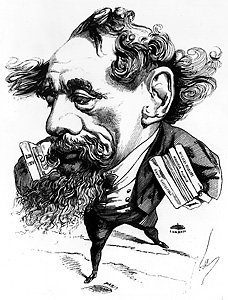Caricature << KAR uh kuh chur >>, in art, is a picture that exaggerates or distorts the physical features or peculiarities of a person or object. The term comes from an Italian word that means overload or exaggerate. Artists create caricatures to make fun of their subjects. Many caricatures ridicule famous individuals. Others poke fun at certain groups, such as politicians or lawyers.

The first important caricatures appeared in Europe during the 1500’s. Many of them attacked either the Protestant or Roman Catholic side during the religious revolution called the Reformation. Britain produced a number of outstanding caricaturists during the 1700’s and 1800’s. William Hogarth became famous for his caricatures that satirized various classes of English society. George Cruikshank, James Gillray, and Thomas Rowlandson created hundreds of biting caricatures on English politics and government.
Perhaps the most famous artist to make caricatures was Honoré Daumier of France. During the early 1800’s, Daumier ridiculed political figures. He drew the fat King Louis Philippe as a giant pear. The king had Daumier imprisoned briefly. After his release, Daumier turned to caricatures of the rising middle class in France. He satirized their fashions, taste in art, and manners.
In the United States, most caricatures have appeared as political cartoons in newspapers. Thomas Nast gained fame for caricatures published from 1869 to 1872 that attacked political corruption in New York City. Leading American caricaturists have included Al Hirschfeld, David Levine, and Patrick Oliphant.
